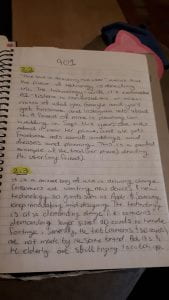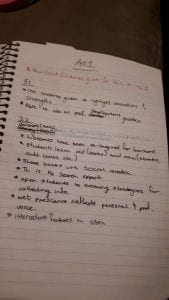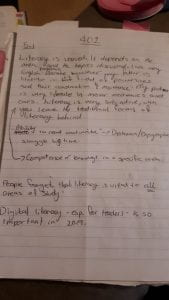I am going to preface this saying that personal, online reflection is not a strong point of mine. I prefer pen and paper over anything else which has made writing my own blog and forum posts a challenge. I hope to do an adequate job, here, showing my understanding of the subject content and how it affects the future. In order to do this, I will be answering the following three areas:
- The role and nature of school library collections;
- The importance of a Collection Development Policy as a strategic document; and,
- How a Collection Development Policy assists in future proofing the collection.
A school library collection is important to any school regardless of its context as public or private, primary or secondary. A school library collection needs to fulfil a wide range of needs, from fiction to non-fiction resources, digital and physical formats and what level they are appropriate for and whether they suit the needs and context of the school (International Federation of Library Associations, 2015, p. 32).
When developing the collection, there needs to be input from teaching staff, especially when looking for teacher specific resources (Hong, 2019). While a Teacher Librarian makes every effort to become knowledgeable in all areas across the curriculum (both Australian Curriculum and South Australian Certificate of Education, in my case. The Year Eleven and Twelve curriculum, may vary from state-to-state), there are small nuances that they may overlook and the teaching staff in that area can pick it up.
Students also play a role in the development of the collection by recommending areas or themes that they would like to see more of. Students can also give their input by simply having a conversation with the Teacher Librarian about a recent book that they are reading or have heard is good or even by saying something as simple as “the library looks boring” (Spigt, 2019).
By simply keeping conversations going with teaching staff and students, Teacher Librarians can learn a lot about what is required within a collection or what areas need improving. However, while recommendations can (and should) be made, how is the collection governed; giving the final “yes” or “no” when deciding what to include?
The school library collection is governed by a Collection Development Policy; which outlines the requirements and selection criteria for the collection. This document is vital to the successful implementation of collection development and management and helps the Teacher Librarian keep the collection current, relevant and true to its purpose and needs (Johnson, 2009, p. 16).
The Collection Development Policy is a (and if it is not, it should be*) a requirement of all school libraries or resource centres; with all staff that work within the library knowledgeable about the contents of the document. I believe that sections of the document should be reviewed annually; with a larger review occurring every three to five years. These policies are evolving to include digital content outside of websites or journals but to now include videos, music and mobile device applications.
A Collection Development Policy is also in place in order to “future proof” the collection. This, in part, segues into copyright which all staff (Teacher Librarian or not) should be aware and mindful of. If copyright is taken into account when acquiring resources (especially digital) for the school collection, plagiarism could occur and this means that the Teacher Librarian is not displaying appropriate conduct for the students. We, as Teacher Librarians, have to be mindful of our own personal censorship due to personal bias, as mentioned in a blog post by another student in this topic (Keogh, 2019).
Libraries also are becoming less ‘book central’ with the inclusion of computer labs or areas to charge students own devices. Many are also including 3D printers in that area to make it a truly multi-functional space. Teacher Librarians are becoming more and more diverse in their skill set and this is something that should be encouraged within both study and work.
Overall, I have learnt an incredible amount over the course of this semester and while I have been lax with my own blog posts, I have found the discussions with fellow students and their own posts incredibly enlightening.
*Outside of study and retail work, I work within an Out of School Hours Care and many believe that the school does not have a Collection Development Policy.
References
Hong, C. (2019). Collection Development Responsibility [Blog]. Retrieved from https://thinkspace.csu.edu.au/librarianbecausebookwizardisntanofficialtitle/2019/05/14/42/
International Federation of Library Associations. 2015. IFLA School Library Guidelines.
Johnson, P. (2018). Fundamentals of collection development and management (4th ed.). Chicago: ALA Editions.
Keogh, C. (2019). Censorship [Blog]. Retrieved from https://thinkspace.csu.edu.au/teacherlibrariancordelia/2019/05/22/censorship/
Spigt, J. (2019). Collaborator, Steward and Thinker [Blog]. Retrieved from http://thinkspace.csu.edu.au/jannet/2019/04/08/59/





